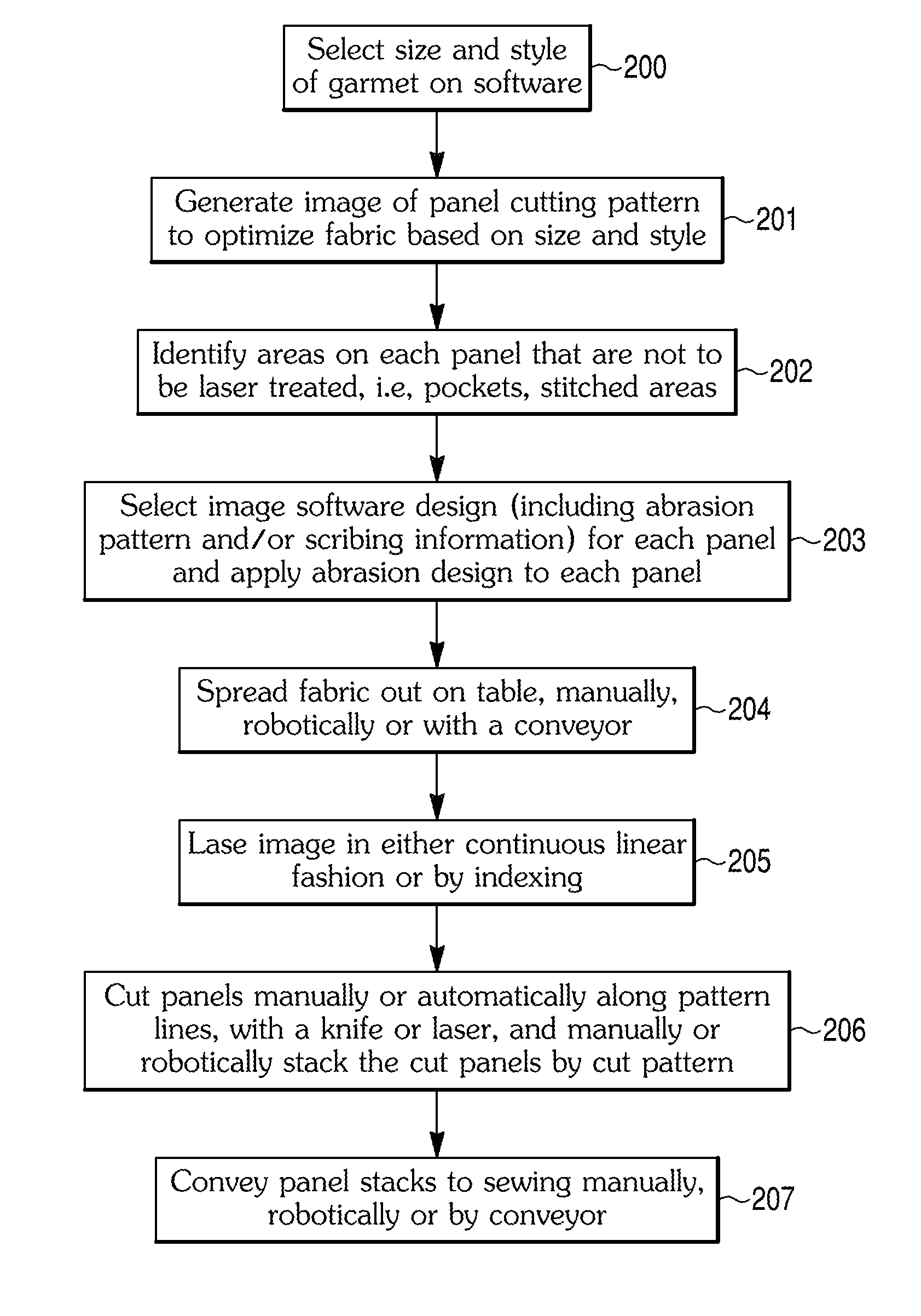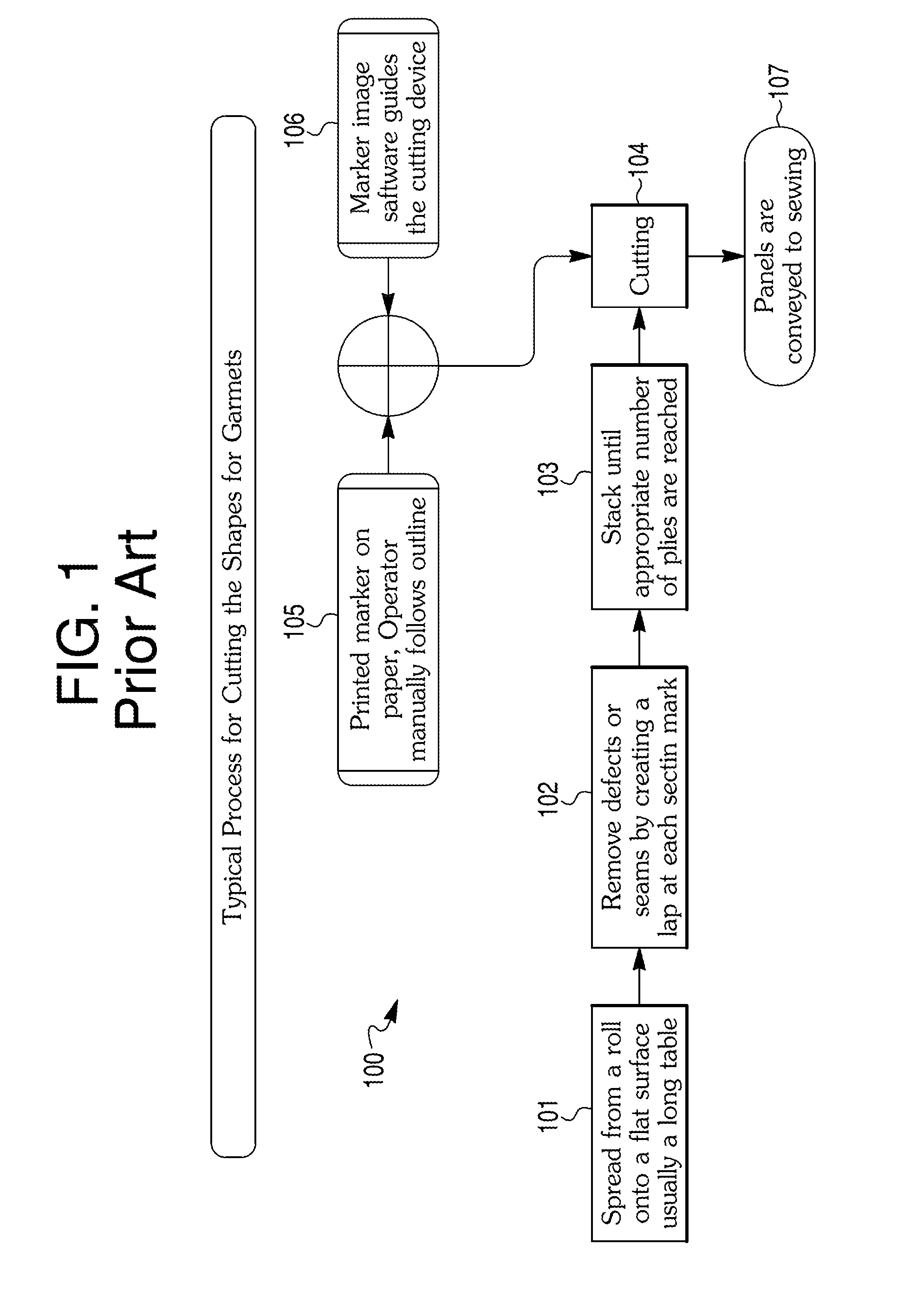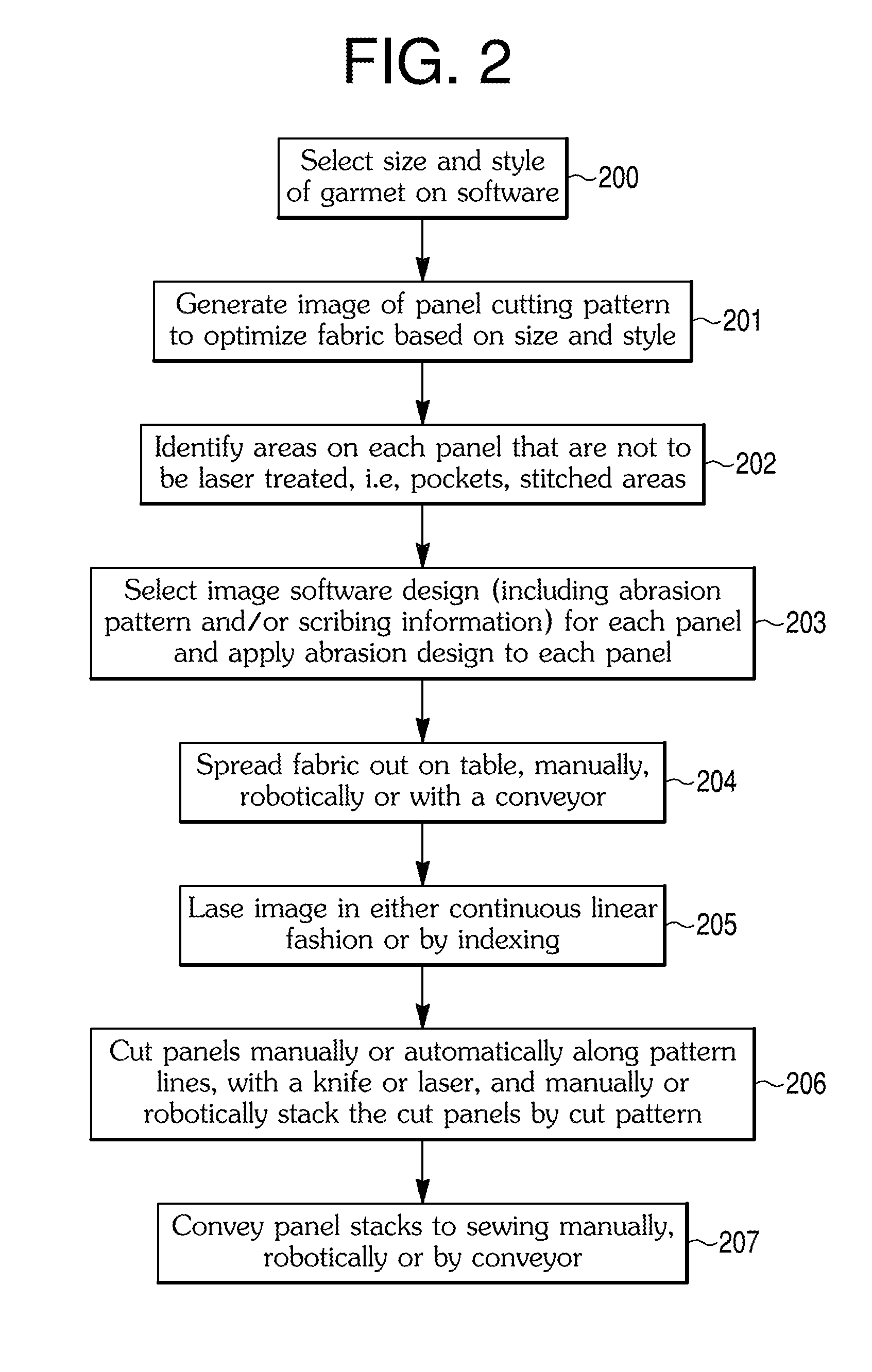System and method of generating a pattern or image on fabric with linear laser irradiation, fabric made by said method, and products made with said fabric
a technology of laser irradiation and fabric, applied in the field of pre-assembly surface treatment of fabric with a laser, can solve the problems of affecting the quality of finished products, and requiring a large amount of enzymes and water in the process, so as to achieve the effect of improving quality control
- Summary
- Abstract
- Description
- Claims
- Application Information
AI Technical Summary
Benefits of technology
Problems solved by technology
Method used
Image
Examples
example
Stonewashed Jean with Whisker Abrasions
[0110]Marking numbers or other information may be lazed onto a leg panel 1200, 1400 in different locations as shown on FIGS. 13 and 14A at 1302 or at 1401. As seen in FIG. 14C, each panel is abraded with a stonewashed pattern 1404 to the point of the seam location and only in those areas that are exposed, e.g., not under the pockets. In this example, about 25% of each fabric length is not laser abraded, leaving a margin 1405, 1300 that is not abraded as seen in FIGS. 13 and 14D. The whisker abrasions 1402, 1403 are overlaid on top of the stonewashed pattern in the appropriate areas on the panel as seen in FIG. 14B. The overlaid images are combined to create a single image with elements for cutting as seen in FIG. 14D, which shows the marker shape and seam allowance 1300, 1405. Therefore, this example has three (3) layered images that form the complete shaped panel:[0111]the master is the panel shape;[0112]the stonewashed abrasion image that is ...
PUM
| Property | Measurement | Unit |
|---|---|---|
| width | aaaaa | aaaaa |
| power | aaaaa | aaaaa |
| incident angle | aaaaa | aaaaa |
Abstract
Description
Claims
Application Information
 Login to View More
Login to View More - R&D
- Intellectual Property
- Life Sciences
- Materials
- Tech Scout
- Unparalleled Data Quality
- Higher Quality Content
- 60% Fewer Hallucinations
Browse by: Latest US Patents, China's latest patents, Technical Efficacy Thesaurus, Application Domain, Technology Topic, Popular Technical Reports.
© 2025 PatSnap. All rights reserved.Legal|Privacy policy|Modern Slavery Act Transparency Statement|Sitemap|About US| Contact US: help@patsnap.com



